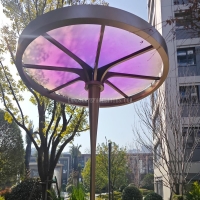Welcome to the website for landscape facilities products and knowledge.
What are the key differences between high-density and low-density foam cushions in landscape sofas?
When selecting cushions for landscape sofas, understanding the differences between high-density and low-density foam is crucial for both comfort and longevity. High-density foam offers superior durability and support, making it ideal for frequent use in outdoor settings. Its tightly packed cells resist sagging and maintain shape over time, even in harsh weather conditions. Low-density foam, while softer and more affordable, compresses more easily and may require replacement sooner.
High-density foam cushions provide better weight distribution, reducing pressure points for extended seating comfort. They also resist moisture absorption, a key advantage for outdoor furniture exposed to rain or humidity. Low-density options, though initially plush, tend to lose resilience faster and may develop uneven surfaces with regular use.
For maintenance, high-density foam typically requires less frequent fluffing and retains its structure longer. Low-density cushions often need more attention to prevent permanent indentations. While high-density foam comes at a higher price point, its extended lifespan often makes it more cost-effective in the long run for landscape sofas.
Consider your climate and usage frequency when choosing between these foam types. High-density foam excels in high-traffic outdoor areas, while low-density may suffice for occasionally used patio furniture where maximum softness is preferred over durability.
Related search:

Recommendation
Metal frame with gradient color acrylic combined with high-end shading landscape facilities